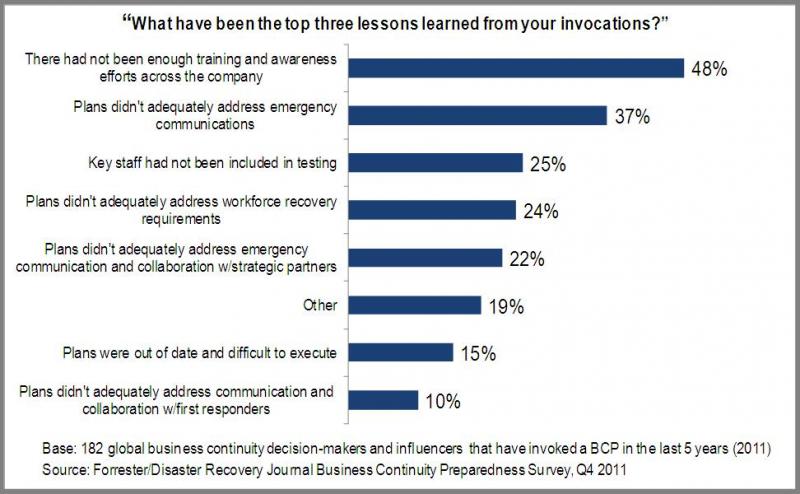Communication And Coordination Should Be The Cornerstone Of Your BC Plan
In a recent Forrester/DRJ joint survey on BC preparedness, of organizations that have invoked a BC plan in the last five years, 37% said that their BC plans had not adequately addressed communication. In my experience, I’ve found that many organizations:
- Don’t appreciate the importance of effective communication. Many organizations focus the content of their BC plans and the goals of their BC exercises on the details of recovery procedures but don’t focus on how they will contact and coordinate response teams, employees, partners, first responders and customers. If you can’t communicate, you can’t respond to anything.
- Rely on manual procedures like call lists or email alone. By themselves, manual procedures are unreliable, they don’t scale for organizations with thousands of employees (or citizens) and they don’t provide any kind of reporting.
- Underestimate the difficulty of communicating effectively under stress. During the incident is not the time to attempt to craft effective communication messages or look for a secondary mode of communication because your first mode of communication (land lines and email) is no longer available.

I’m already starting to see focus of BC planning and preparedness shifting to communication before, during and after a critical event. Consider the recent tornadoes in Dallas, it’s estimated that between six and 13 tornadoes may have touched down in Dallasbut thankfully no one was killed. Luck and good fortune are a part of it and of course, many area residents have experienced tornadoes before and know what to do but also consider the role of communication. Dallas has 94 sirensthat alert people who are outdoors to and they test these sirens on the first Wednesday of every month Also consider the role of mobile devices and social technology. Many people were alerted about the tornadoes through tweets, Facebook status updates. If you live in the US, I highly recommend following FEMA on Twitter (@FEMA) as well as NOAA @usnoaagov.
I plan to do more research into automated communication services, communication best practices and of course, the role of social in communication, I’m interested to hear from enterprise BC professionals if they sense a similar shift in focus in their organization.
